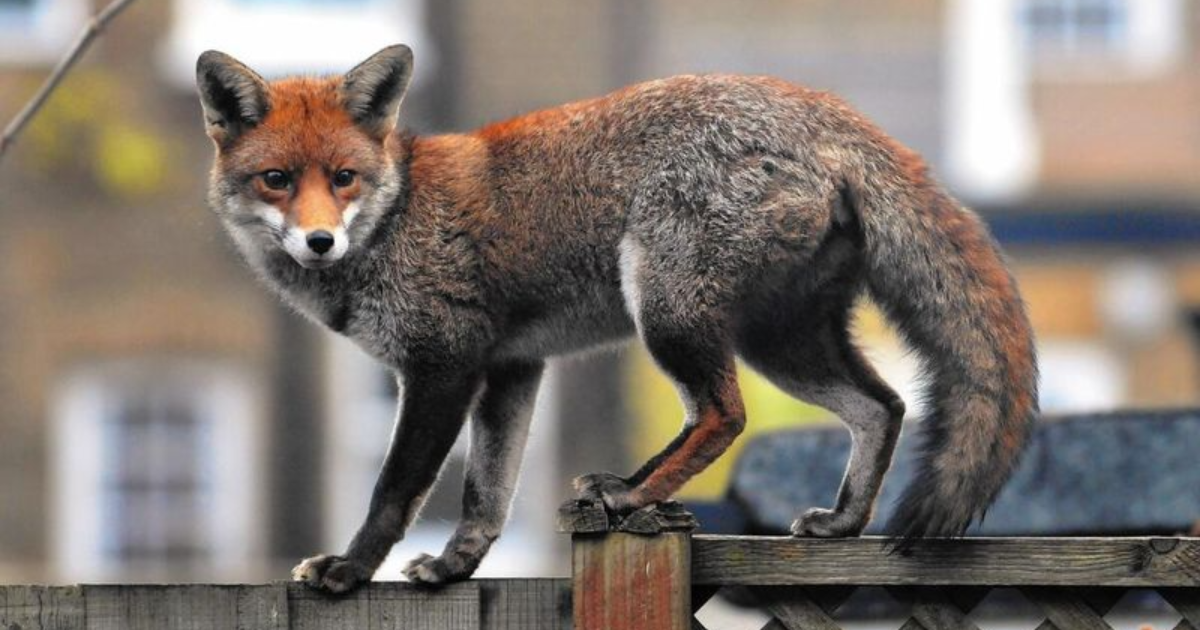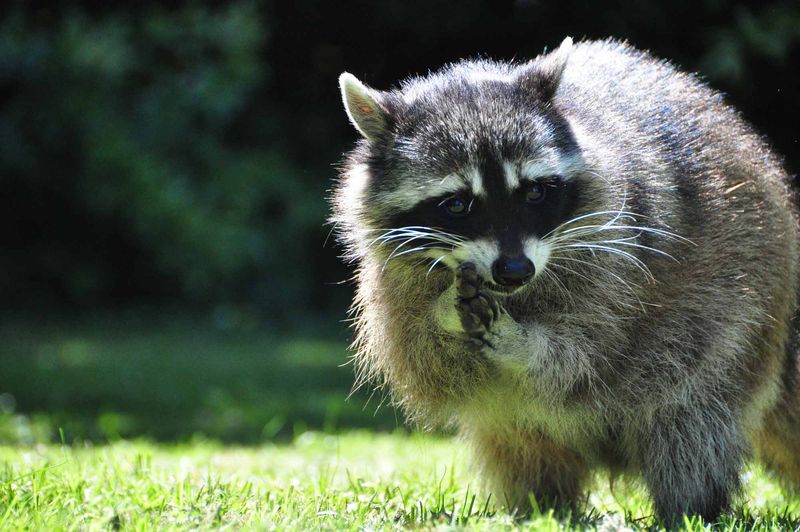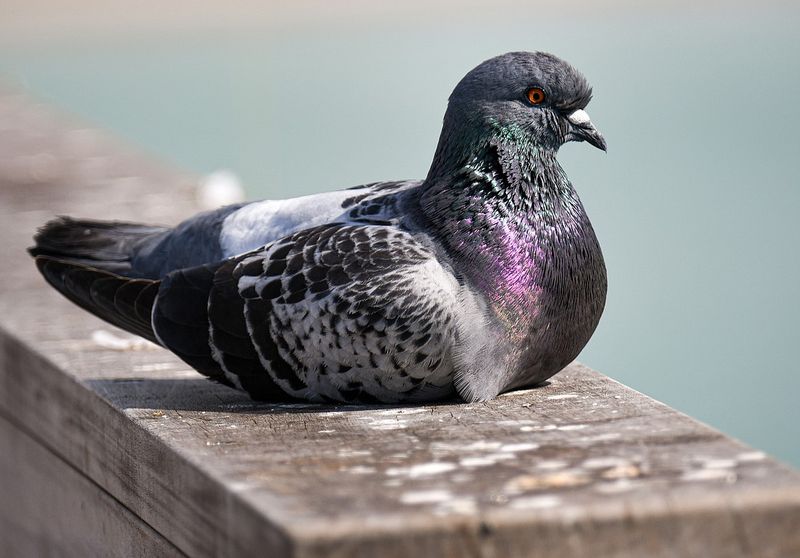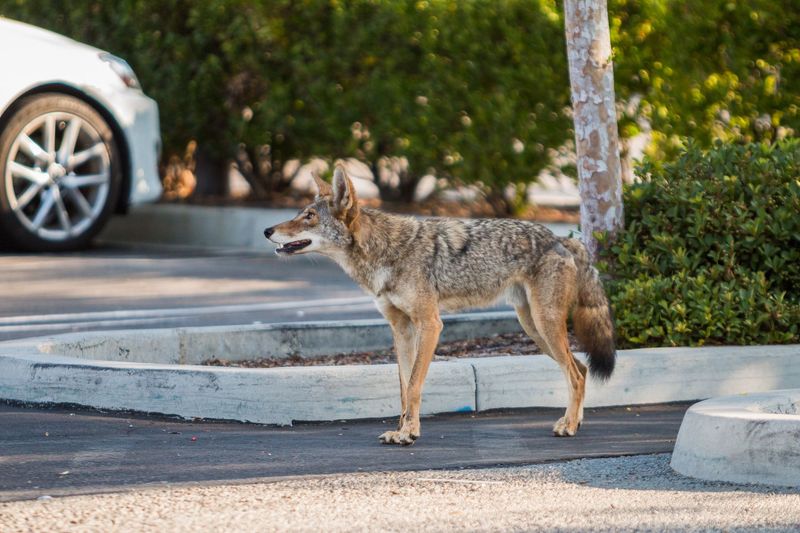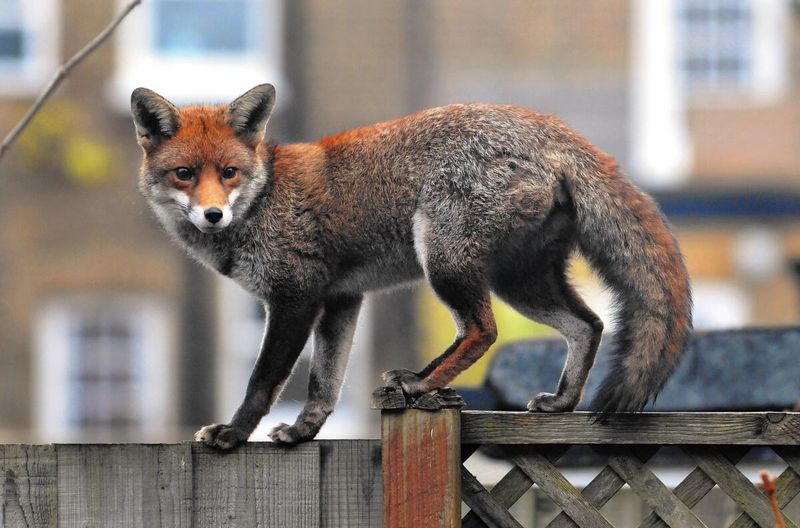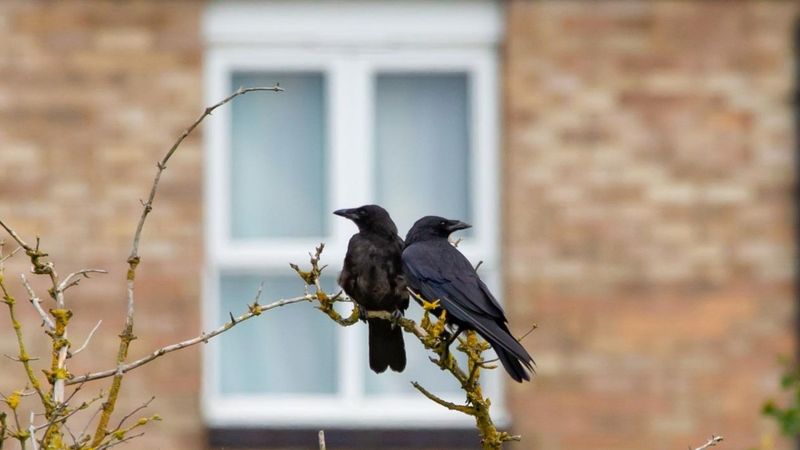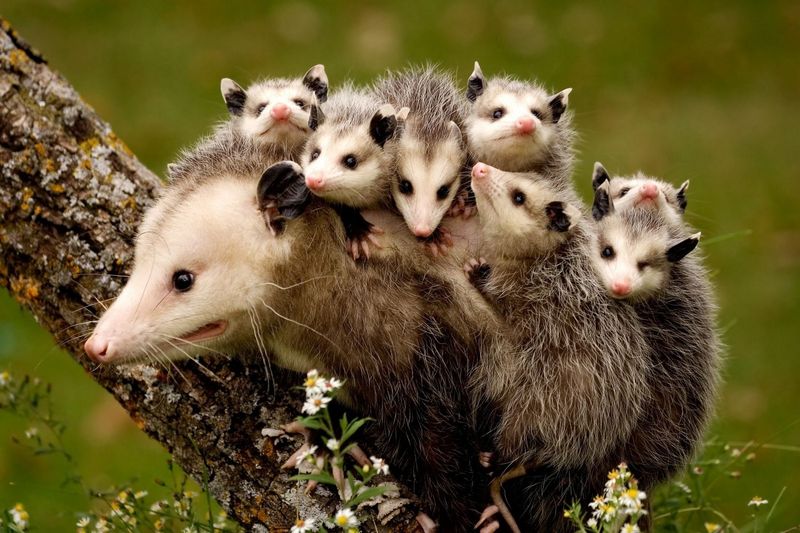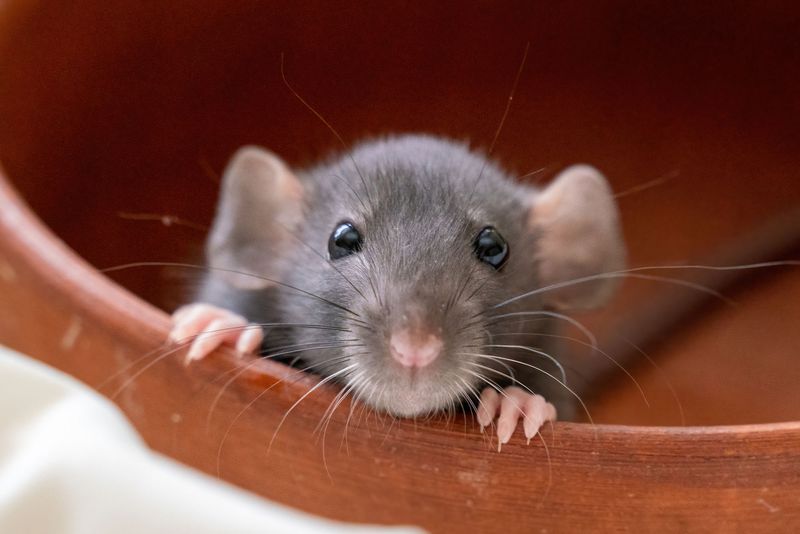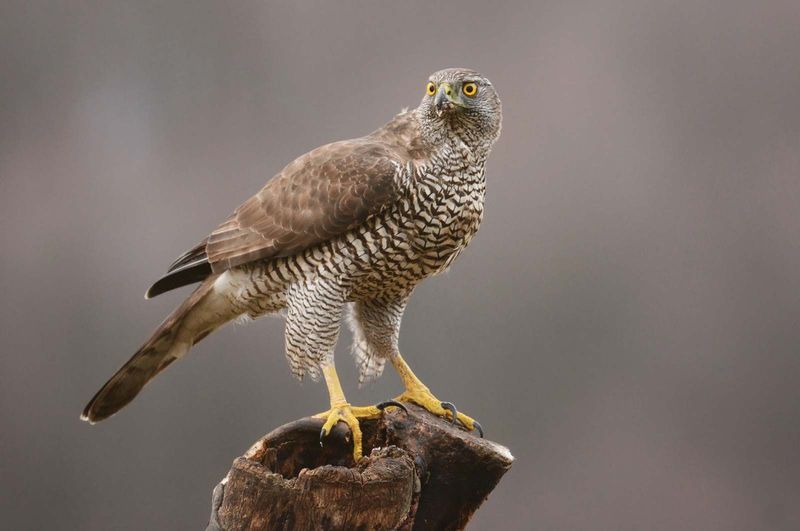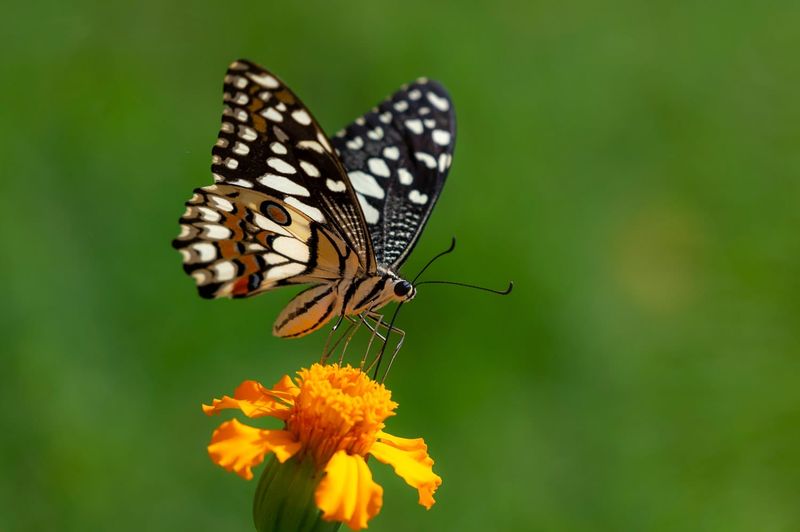📖 Table of Content:
Urban areas, with their ever-expanding reach, are no longer just human territories—they’ve become unexpected havens for wildlife.
It’s fascinating to think that amidst the hustle and bustle of city life, with its towering skyscrapers, endless traffic, and constant noise, some wild animals have not only survived but thrived. They’ve adapted to our concrete jungles in ways that are both ingenious and inspiring.
From the clever raccoon rummaging through trash cans like a seasoned scavenger to the stealthy coyote prowling suburban streets under the cover of night, these animals have mastered the art of city living.
Join us as we explore ten of these remarkable species, uncovering how they’ve navigated the challenges of urbanization and found ways to flourish right under our noses.
10. Raccoon
Raccoons are perhaps the most notorious urban adapters. These masked creatures have learned to navigate cities with remarkable dexterity.
Known for their cleverness, raccoons are adept at opening trash bins and finding food in unlikely places. Their nimble front paws allow them to manipulate objects, making them a common sight in urban areas across North America.
Raccoons are also masters of disguise. With their distinctive black masks, they blend into the shadows of night, foraging for food scraps left by humans. They’ve even adapted to traffic, often using storm drains to cross busy streets safely.
9. Pigeon
Often dubbed the ‘rats with wings,’ pigeons are ubiquitous in urban landscapes. These birds have adapted so well to cities that they are often seen as part of the urban scenery.
Pigeons thrive in cities by feeding on scraps and leftovers from humans, particularly in city squares and parks. They have even adjusted their nesting habits to accommodate the man-made structures around them.
With their excellent navigation skills, pigeons often return to the same spots, making them a consistent presence in urban areas. Despite their reputation, they play a crucial role in city ecosystems by helping control unwanted insects.
8. Coyote
Coyotes have shown a remarkable ability to thrive in urban and suburban environments. Originally creatures of the wild, they now inhabit many city outskirts.
These adaptable animals have adjusted their hunting patterns, preying on small mammals and even scavenging from trash. Coyotes are often active during twilight hours, reducing the risk of encountering humans while maximizing their foraging success.
Their keen senses and cautious nature help them navigate the challenges of city life. Residents are advised to secure trash bins and avoid feeding pets outdoors to minimize human-coyote conflicts.
7. Squirrel
Squirrels are agile acrobats of the urban jungle. They have seamlessly adapted to city parks and neighborhoods, often seen scampering across power lines or raiding bird feeders.
These nimble creatures have a knack for finding food in urban areas, whether it’s nuts from trees or scraps left behind by humans. Squirrels also exhibit impressive problem-solving skills, often finding ingenious ways to access food sources.
Their adaptability is evident in their nesting habits, as they use attics and other structures to build nests. Urban dwellers are encouraged to squirrel-proof their homes to avoid sharing their living spaces with these bushy-tailed intruders.
6. Fox
Red foxes have taken to urban environments with surprising ease. These cunning creatures are often spotted in suburban neighborhoods, parks, and even city centers.
Foxes have adapted their diet to include human food waste, small mammals, and even birds. They are primarily nocturnal, which helps them avoid human interactions while hunting or scavenging.
Their adaptability is further highlighted by their ability to use garden spaces and unused buildings for shelter. While generally shy, foxes can become bolder in urban settings, so it’s wise to secure garbage and avoid feeding them directly.
5. Crow
Crows are highly intelligent birds that have adapted well to urban life. Their problem-solving skills and adaptability make them a common sight in cities worldwide.
These birds are known for their ability to use tools and solve puzzles, which aids them in finding food and nesting sites. Crows thrive on human food waste and can often be found near restaurants or busy streets.
Additionally, crows have a complex social structure and are known to work together to solve problems or protect their territory. Their adaptability and intelligence have allowed them to carve out a niche in the bustling urban environment.
4. Opossum
Opossums are unique marsupials that have adapted to urban areas across North America. These nocturnal creatures are often seen scavenging at night, taking advantage of human waste and leftovers.
Their ability to eat a wide variety of foods, including insects, fruit, and garbage, makes them well-suited to city life. Opossums are also known for ‘playing dead’ as a defense mechanism when threatened.
Urban residents may find opossums in their backyards or garages, as they seek shelter in quiet, dark places. To coexist peacefully, it’s best to secure trash and minimize potential hiding spots around homes.
3. Rat
Rats are infamous for their ability to thrive in cities. These rodents are highly adaptable, often found in sewers, subways, and even inside human dwellings.
Their success in urban areas is largely due to their omnivorous diet and prolific breeding capabilities. Rats are known to eat anything from discarded food to small animals, making them resilient survivors.
Despite their negative reputation, rats play a role in the urban ecosystem by breaking down waste. However, controlling their population is essential, as they can spread diseases to humans. Proper waste management and sealing entry points can help reduce rat infestations.
2. Hawk
Hawks, particularly the red-tailed variety, have adapted to urbanization by taking advantage of tall buildings and abundant prey. These birds of prey are often seen soaring above cityscapes.
Their keen eyesight and hunting prowess enable them to spot and catch small mammals and birds in urban environments. Hawks utilize skyscrapers as nesting sites, mimicking the cliffs they naturally prefer.
Their presence in cities helps control the population of rodents and other small animals. While they are majestic to observe, it’s important for residents to avoid disturbing their nests or feeding them to maintain a healthy balance.
1. Butterfly
Butterflies, surprisingly, have found ways to thrive in urban environments. Cities with green spaces like parks and gardens provide essential habitats for these colorful insects.
Many urban planners now include butterfly-friendly plants in their designs, helping these creatures find food and breeding grounds amidst concrete landscapes. Butterflies are attracted to nectar-rich flowers, which can often be found in city gardens and balconies.
Their presence in urban areas not only adds beauty but also aids in pollination, contributing to the health of city ecosystems. Planting native flora can further support butterfly populations, creating vibrant urban sanctuaries for them.
